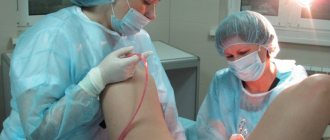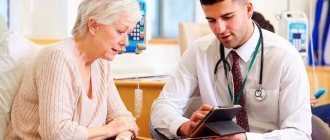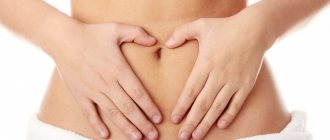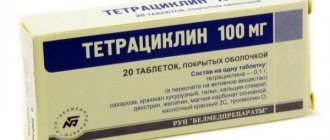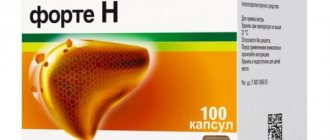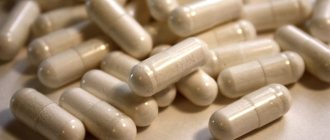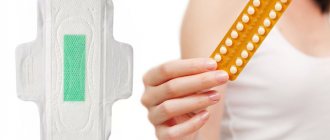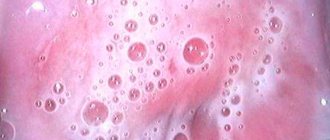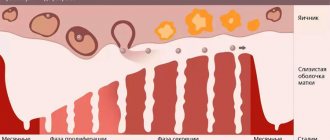Can taking antibiotics cause thrush?
Antibacterial drugs, especially broad-spectrum ones, can suppress natural microflora. The fact is that they kill not only harmful bacteria, but also those that are considered beneficial to the body. A bacterial imbalance occurs, which thrush pathogens can take advantage of.
Most representatives of the fungal flora are resistant to conventional antibiotics, and simple antibacterial agents can even provoke their growth. And in the absence of surgical treatment, thrush easily spreads to different organs and systems of the patient’s body.
How to neutralize the inhibitory effect of antibiotics?
Most of us are well aware that to prevent dysbiosis and other disorders in the digestive system, we need to take medications containing beneficial bacteria, as well as strengthen our diet with fermented milk products, fruits and vegetables.
But little is known about the prevention of thrush after taking antibiotics. Patients either do not know about the threat of developing a fungal infection, or they independently use the antifungal agent that they heard about from advertising. But such prevention of thrush is rarely effective.
It is very important to choose the right drug, the use of which will be both gentle and effective. To do this, a means of preventing thrush when using antibiotics must have the following qualities:
- Actively suppress the fungus of the genus Candida (it is this that causes thrush)
- Quickly relieve the patient from uncomfortable symptoms - discharge, itching, irritation, discharge, swelling, and so on
- Act in all foci of thrush that are in the body
- Do not overload the kidneys and liver
- Do not suppress the beneficial sector of natural microflora.
Only an experienced specialist can choose the right drug to prevent thrush during antibiotic therapy. He will develop a scheme for its application on an individual basis. So, for some patients, topical medications are sufficient, which are very effective in combating the manifestations of thrush, but are poorly absorbed into the body, and therefore their toxic effect is minimal.
But for patients who need systemic prevention, tablets are suitable that can resist fungal flora simultaneously in all places where it is concentrated.
https://youtu.be/SbLdRV3AVOY
Signs of thrush
Thrush after taking antibiotics has the same symptoms as with other causes of this disease. Namely:
- curdled discharge in the form of clots;
- itching of the genitals;
- cracks may appear in areas affected by the fungus;
- pain and scratching of damaged skin.
- Immunity must be improved and supported with drugs of natural origin, such as anaferon, echinacea, etc.
- Treatment with antifungal drugs should be started only after tests have been taken and their results have been received, especially since you should not do this on your own.
- If symptoms of thrush appear after using antibiotics, you need to go to an appointment with a gynecologist, who, based on the examination data, will prescribe treatment.
Most cases in which the natural environment of the vagina is disrupted are associated with a violation of the microflora of the digestive system. At the same time, thrush that appears after undergoing a course of antibiotic treatment is often accompanied by serious intestinal disorders. In this scenario, both the digestive and reproductive systems are subject to treatment at the same time.
Also important factors contributing to the occurrence of this disease will be:
- Neglect of personal hygiene;
- Unbalanced intake of vitamins;
- Infections present in the body;
- Diabetes mellitus;
- Constipation and intestinal problems;
- Inflammation in the vagina;
- Promiscuous sex life;
- Oral contraception;
- Taking a long course of treatment with antibiotics;
- Pregnancy.
Self-determination, let alone treatment of the disease, is extremely undesirable. Therefore, after identifying the first uncomfortable signs of candidiasis, it is necessary to contact an appropriate specialist who, after receiving test results, will prescribe a course of treatment in accordance with the diagnosis. The following signs may help suggest the onset of the disease:
- A burning and itching sensation inside and outside the genitals, which is especially noticeable when sitting cross-legged and wearing tight-fitting trousers.
- Natural vaginal discharge changes its natural color and consistency. The amount of discharge increases sharply, mainly at night, as well as during active movement and during sexual intercourse. Unpleasant sensations appear after urination or defecation. The genitals become inflamed, both externally and internally, and redness and swelling appear on them.
The above symptoms do not appear in all women, therefore, for prevention purposes, it is necessary to undergo regular examinations by a gynecologist, approximately once every six months.
What drugs are used for prevention?
In the case of antibiotic treatment, the following antimycotic drugs are effective to prevent thrush:
- Livarol - these suppositories are great for preventing thrush, but are not always effective enough during treatment
- Pimafucin is considered one of the safest drugs, which is suitable for pregnant women and even newborns
- Clotrimazole has limitations for use, but it is the most widely used drug that is effective not only against the causative agent of thrush, but also in the fight against other fungi
- Nystatin is good for prevention, but should not be used by pregnant women
- Terzhinan can be used during pregnancy, although some doctors do not recommend this
- Hexicon is very popular today, as it can be used not only during pregnancy, but also during lactation
- Viferon is a good immunostimulant, the intake of which helps restore the functions of the immune system so that the body can independently cope with fungal microorganisms
- Bifidumbacteria are intended to restore natural microflora and support local immunity.
Women are most often prescribed suppositories, vaginal suppositories or tablets, and men are prescribed ointments and antifungal creams. If necessary, tablets are also prescribed to prevent thrush. In most cases, this is Fluconazole and drugs based on it.
Candidiasis (thrush) and discharge after antibiotics
If a curd-like discharge, itching, burning in the vagina and swelling of the external genitalia occurs, we can talk about the presence of symptoms of vaginal candidiasis (thrush). Often this disease occurs chronically in women, and taking antibiotics provokes its exacerbation. In addition, a serious stressful situation or neglect of hygiene rules can lead to aggravation.
Yeast-like fungi, present in the opportunistic vaginal flora, begin to actively multiply during a course of antibiotic treatment. If the body’s own defenses are not enough to fight the Candida fungus, which provokes the development of candidiasis, the patient needs to be prescribed special antifungal agents. During the treatment process, it is important to adhere to a dietary diet that is dominated by vegetables and yeast-free types of baked goods. It is better to temporarily avoid sweets and dairy products.
Other measures to prevent thrush
Very often, the development of thrush is facilitated by the patient’s habits and lifestyle. In this regard, for prevention while taking antibiotics you need to:
- Do not consume any toxic substances (alcohol, smoking)
- Provide the body with a complete complex of vitamins, using not only ready-made pharmaceutical preparations, but also freshly squeezed juices, herbal teas, healthy foods
- Supplement your diet with fermented milk products as a source of bifidobacteria, which, being an active part of the natural microflora, control the number of fungal flora
- Carry out periodic anthelmintic therapy using anthelmintic drugs
- Lead an active lifestyle, giving preference to walks in the fresh air, sports, and outdoor recreation
- Avoid stressful situations, as nervous tension has a detrimental effect on the immune system.
Hygiene as one of the main preventive sectors
Due to poor hygiene, the fungus has an even greater chance of colonizing and starting to cause problems for humans. Therefore, sufficient attention should be paid to the cleanliness of the skin.
Synthetic and tight underwear should not be worn: it creates a kind of greenhouse effect over the surface of the mucous membranes of the genital organs, and in conditions of high humidity and a warm climate, yeast microorganisms grow well. It is better if there is a natural cotton-based fabric closer to the body, which will allow natural ventilation of the skin. Loose underwear made from the right materials also helps prevent allergic reactions.
Prevention of thrush when taking antibiotics also includes avoiding those hygiene products that contain aromatic additives and dyes. Women should not buy sanitary pads with a vent, and it is better to refuse “daily pads” altogether. Natural cosmetics are sold in pharmacies; they are specially developed by pharmacists so that their use does not lead to disruption of the flora.
How can you prevent the occurrence of candidiasis?
A separate type of drugs that all women are allowed to use as a preventive measure for candidiasis when taking antibiotics are vaginal suppositories. They can be used from the first day of antibiotic therapy.
Natural linen. Reduced immunity due to antibacterial therapy is not able to reliably protect against fungal diseases, especially if associated factors contribute to this: inflammatory processes, irritation due to the use of synthetic underwear.
Daily hygiene. In no case should you forget about personal hygiene. It is better if a special antifungal and bactericidal agent for intimate hygiene is used.
Maximum rest. To avoid the appearance of candidiasis, you should not overwork yourself, either physically or mentally. To restore the body after using antibiotics, a person needs to get a good night's sleep.
Complete nutrition. To prevent thrush from starting, a woman should consume sufficient quantities of foods such as greens, meat, and vegetables, which will ensure that the body receives and saturates it with vitamins and proteins.
If you notice the first signs of the disease, you should consult a specialist and undergo an examination. If the diagnostic results confirm thrush after antibiotics, the attending specialist will tell you how to treat it correctly and competently.
List of antibiotics for thrush for women
Thrush (candidiasis) - a pathology caused by yeast fungi of the Candida family - are opportunistic. Activity can be provoked by many reasons: stress, neurosis, infectious diseases, long-term treatment with medications, etc. The disease is manifested by itching, burning and discomfort in the intimate area. Antibiotics for thrush are recommended in extreme cases when other drugs have not given the desired result. With the right approach, they can get rid of the problem in a matter of days.
Levorin for thrush: description and instructions
Levorin is an antibacterial antifungal drug that has fungicidal properties. It has several forms of release - ointment in tubes, powder and tablets for internal use. The main active ingredient is levorin sodium salt. The active component is characterized by a pronounced antifungal effect. Today, this antibiotic is one of the best on the pharmaceutical market. It affects the membranes of pathogenic microorganisms, leading to increased susceptibility, and as a result, the fungi die.
The only contraindication is organic intolerance to the main substance or additional components. It is not recommended to prescribe the drug in infancy.
Directions for use against thrush:
- For vaginal candidiasis, the daily dosage is 400-500 thousand units twice a day, the duration of the therapeutic course is at least one and a half weeks;
- For thrush in children, a medicine is taken in the oral cavity at the rate of 25 thousand units per kilogram of body weight;
- If ointment is used, apply a thin layer to the affected area twice a day. Use time ranges from 8 to 12 days.
Important: while using Levorin, it is strictly forbidden to drink alcoholic beverages.
In accordance with the annotation of the product, the development of side effects cannot be excluded:
- Allergic manifestations - itching, burning, urticaria. In case of severe intolerance, Quincke's edema.
- Digestive system upset, vomiting, diarrhea, abdominal pain, increased gas formation.
- Dizziness – from the central nervous system.
- Increased temperature, weakness and apathy.
The drug is not prescribed in the first trimester. In the second and third - only on the recommendation of the attending physician. Do not use during breastfeeding, as the active components penetrate into milk.
Amoxicillin against candidiasis: features of the drug use
The prescription of Amoxicillin is always individual, since the drug is not suitable for all patients. It all depends on the stage of development of candidiasis, gender and age group of the person. The drug is characterized by a wide spectrum of effects.
The tablets belong to the group of penicillins and are aimed at destroying harmful microorganisms. Against the background of infectious and inflammatory diseases that led to the development of thrush, the drug acts as monotherapy. In other cases, it is included in a comprehensive treatment regimen.
Taken orally. The drug is quickly absorbed in the gastrointestinal tract and is not destroyed in an acidic environment. The maximum concentration of active substances is observed two hours after application. The dosage is determined individually.
Standard doses according to instructions:
- For adult patients and children over 10 years of age, a single dosage is 250-500 mg.
- For advanced forms of thrush, it is recommended to take 1 g per day;
- For children aged 5-10 years, the dose is 250 mg; up to 5 years of age – 2.5 mg.
Please note that food intake does not affect the absorption of the drug, so it can be taken before, during or after meals.
Contraindications: allergic pathologies - bronchial asthma, allergy to penicillin, liver failure, dysbacteriosis, lactation. During pregnancy, medications are prescribed based on the principle of potential benefit and probable harm.
In girls, the medicine can cause a number of side effects:
- Allergic reactions in the form of hives, rashes.
- Nausea, vomiting, taste bud disturbance, diarrhea.
- Sleep disturbance, agitation, panic attack, depressive syndrome.
- Cramps, headaches and dizziness.
The combination of drugs for thrush for women and alcoholic beverages can provoke a severe allergic reaction, including death. In addition, this combination negatively affects liver functionality.
In most cases, the drug is well tolerated by patients. As for its effectiveness against thrush, the medicine does not help everyone.
How to treat thrush in a child after antibiotics? Dosages and use of drugs
Treatment of thrush caused by the use of antibiotics must be carried out in several directions simultaneously. It is necessary to bring the disturbed intestinal microflora back to normal. Along with eliminating problems of the digestive system, it is necessary to treat candidiasis. If there is no relief of the symptoms of the disease when using prebiotics prescribed by the attending physician for two days, it is necessary to use topical antifungal drugs.
Strengthening the immune system through a comprehensive intake of vitamins and minerals is of no small importance.
The development of new drugs that can defeat a disease such as candidiasis, which occurs in women after using antibiotics, is a daily task for doctors and researchers. At the moment, dozens of drugs have been developed and are commercially available that can quickly defeat thrush. The most popular and high-quality ones are:
- Pimafucin suppositories that eliminate the causes of the disease. The main active substance of this drug is natamycin, the peculiarity of which is the absence of systemic adsorption at the moment of its contact with the mucous membranes and skin.
- Perfectly eliminating candidiasis, Livarol suppositories, which are based on the component ketoconazole, help to disappear thrush caused by taking antibiotics within a few days.
- Fluconazole, which is a component of drugs such as Mycomax, Diflucan and Forcan, can eliminate discomfort after a single use.
- Clotrimazole, the most acceptable in terms of price and quality ratio, is popular among women treating thrush acquired after antibiotics. It is the basis of medicines - Kanizon, Candibene and Antifungol.
There are other equally effective medications to eliminate this disease. Any of the listed drugs should be taken only after they have been prescribed by a specialist, based on the data of the examination.
Along with medications, fermented milk products should be added to the diet, which normalize the microflora of the digestive system. Follow a diet, exclude from the diet foods that negatively affect the digestive system.
There are a number of rules that, if followed, will help prevent the appearance of thrush after completing a course of antibiotic treatment:
- Rational diet.
- Systematic examination by a gynecologist, every six months.
- Compliance with personal hygiene rules.
- Treatment of gynecological and general diseases of the body should be carried out in a timely manner.
- Limiting the number of sexual partners.
Preventive measures include maintaining a healthy lifestyle, i.e. refusal to drink alcoholic beverages, foods that negatively affect the body, and smoking. You should also avoid stress by maintaining a favorable emotional state.
Pregnant
Thrush from antibiotics can occur for a number of reasons, namely:
- long course of treatment;
- failure to comply with exact dosages;
- independent choice of drug, etc.
As you know, yeast-like fungi are natural inhabitants of the human body. Their moderate amount does not cause any diseases. This is strictly monitored by our immune system; it does not allow opportunistic microflora to increase and form colonies.
But what happens when the immune system is weakened?
- curdled discharge with a sour odor;
- itching, burning and redness of the genitals;
- pain when urinating, etc.
What role do antibacterial agents play in this whole process? The fact is that antibiotics have a detrimental effect not only on pathogenic microflora, they also destroy beneficial bacteria that are opponents of fungal infections. As a result, dysbiosis occurs, which is a provoking factor in the appearance of candidiasis.
Without a doubt, it can be argued that the leading influence is, of course, immunity. In a normal state, after taking antibiotics, the biochemical processes of our body begin to activate.
Even a biochemical restructuring occurs, as a result of which the beneficial microflora suffers to a lesser extent from the negative effects of antibacterial therapy. But what happens when internal defenses are weakened?
If the cells of the immune system are weakened, they even enhance the effect of antibiotics, and their effect on beneficial microflora becomes more aggressive.
Antibiotics treat various diseases, but at the same time they can disrupt the natural balance of microflora, provoking the development of a fungal infection. Let's consider the common consequences after antibiotic therapy:
- thrush in the mouth. Damage to the oral mucosa leads to the appearance of a cheesy plaque in the gums, cheeks, and tongue. Small cracks and bleeding wounds may even appear. Often children are very capricious and refuse to eat. If not treated in a timely manner, the fungal infection can spread further, affecting the pharynx, lips, and tonsils;
- thrush on the skin. The skin of children is quite delicate and sensitive, which is why yeast-like fungi often choose it as their habitat. The infection can affect the chest area, back, legs, arms and other places. The skin becomes dry and rough. First, red spots appear, which are replaced by bubbles. The child suffers from severe itching, and if treatment is not started in time, erosions may form;
- thrush of the genital organs.
Due to the structure of the urogenital area, girls suffer from candidiasis more often than boys. Itching, burning, redness and swelling of the genitals , as well as white discharge, appear.
Treatment of thrush after taking antibiotics consists of observing the following measures:
- the use of local antifungal agents, and in severe cases, systemic therapy is used;
- for intestinal candidiasis, probiotic preparations are used that restore the natural microflora;
- maintaining a proper diet aimed at limiting sweet and yeasty foods. The diet includes foods rich in proteins, beneficial bacteria and vitamins.
Soda solution
As you know, fungal infection develops well in an acidic environment. A soda solution creates an alkaline environment in which candidiasis pathogens simply cannot develop.
Soda is an affordable remedy that is found in almost every home, and its effectiveness in combating the manifestations of thrush has long been proven. Soda solution is used to wipe the affected areas, treat the mucous membrane and rinse the mouth.
It is worth noting that soda is not a panacea and it is not an alternative to antimycotic drugs; rather, it is an addition to the main treatment.
How to properly prepare a soda solution? You need to take one glass of warm boiled water and dissolve a teaspoon of baking soda in it. The solution is ready for use only after complete dissolution.
- proper nutrition;
- maintaining hygiene;
- simultaneous intake of probiotics during a course of antibiotic therapy;
- compliance with medical recommendations;
- choosing the right clothes.
Although thrush seems like a harmless disease, it is actually a rather serious illness with far-reaching consequences. Candidiasis can worsen a person’s general condition, intimate area, and even lead to the development of infertility. The disease tends to become chronic, which is fraught with the appearance of unpleasant inflammatory processes.
So, uncontrolled use of medications, especially antibiotics, can lead to damage to the most important organs and systems of our body. If alarming symptoms appear that indicate the development of the disease, immediately go to a specialist.
First of all, undergo an examination, and after prescribing treatment, strictly adhere to your doctor’s recommendations. Remember, the choice of medication, as well as the duration of treatment, is the task of a qualified specialist! And then you will not need to know how to treat thrush with antibiotics. Be healthy!
Category: HOW TO TREAT
Antibiotics are used to treat acute bacterial infections that the immune system is unable to suppress. The stronger the active ingredient of the drug, the higher the risk that representatives of the beneficial bacterial flora will also be affected. Therefore, it is necessary to take antibiotics only as prescribed by a doctor.
During treatment, the natural intestinal microflora is disrupted. The bacteria responsible for digestion that live in this part of the body are sensitive to the effects of antibiotics. Fungi, on the contrary, are not susceptible to the effects of antibacterial drugs, but when the natural microflora is disturbed, they begin to actively multiply. The disease has specific symptoms - in adults this is discharge from the genital tract, itching and burning in the external genital area.
- When treating genital lesions in older girls, suppositories Clotrimazole, Natamycin, Levorin are used.
- For the treatment of genital candidiasis in young boys and girls, local treatment with soda solution, antifungal ointments and creams is used - Pimafucin, Candide, Clotrimazole.
For long-term candidiasis, the use of antifungal drugs in the form of tablets is indicated. If the oral cavity and gastrointestinal tract are damaged, it is necessary to restore the natural intestinal microflora with the help of drugs such as Linex, Biovestin, Bifidumbacterin.
It is known that the antibiotic destroys both pathogenic bacteria, as well as neutral and beneficial ones (those that participate in the digestive processes or suppress the action of pathogens). After this, the internal or external environment becomes sterile, and it is actively populated by new “tenants”, between whom equilibrium is not immediately established.
Amoxiclav for the treatment of thrush
Amoxiclav is a modern medicine against candidiasis. It is highly effective against Candida fungi. The product has many side effects, so it is recommended as a last resort. It helps only in cases where the pathology is caused by inflammatory or infectious processes.
In fact, Amoxiclav is similar to the action of Amoxicillin, since it consists of it. However, clavulanic acid is present as an additional component. This combination leads to the destruction of fungi due to the binding of their surface receptors.
The dosage depends on the patient’s age, weight, severity of the infectious process in the body, condition of the liver and kidneys. The duration of the course of treatment ranges from 5 to 14 days, longer is not possible.
- Adults are prescribed 375 mg every 8 hours.
- 625 mg tablets every 12 hours.
Important: tablets differ in the ratio of active ingredients. It is prohibited to exchange 625 mg tablets (500 g amoxicillin + 125 g clavulanic acid) for 375 mg tablets (250 g amoxicillin + 125 g clavulanic acid).
An antibiotic rarely causes harmful effects. In most cases, negative phenomena are observed in people over 50 years of age. The most common complaints are nausea, general malaise, weakness and lethargy, and slight dizziness.
Other antibiotics to get rid of thrush
Antibiotics for thrush in women are not varied. Conventional medications are not suitable for the treatment of an unpleasant disease; only those that, along with an antibacterial effect, have antifungal activity are needed.
The antibacterial treatment regimen should also include other drugs aimed at strengthening the immune system, helping to restore the full intestinal microflora. Vitamins, mineral complexes and immunomodulators are often prescribed.
Levomycetin for thrush, which has the main substance chloramphenicol, is never prescribed. On the contrary, the drug leads to candidiasis. This is due to the fact that its use washes away the beneficial intestinal microflora, leading to imbalance and dysbacteriosis, which appears to be a factor in the development of thrush.
List of antibiotics for thrush:
- Trichopolum is prescribed only in cases where candidiasis is the result of an infectious process in the body;
- Flemoxin is a mild and gentle antibiotic that can be used during pregnancy and lactation. Not effective for thrush caused by a fungus. But it helps against candidiasis caused by polyinfection;
- Metronidazole. The product is effective against only certain Candida fungi; helps get rid of thrush caused by infection. For fungi Candida tropicalis or Candida albicans – useless;
- Pimafucin is available in the form of tablets, cream and suppositories. The application option depends on the location of the thrush. It is a good drug that helps get rid of even the chronic form of candidiasis.
Self-medication of thrush leads to a chronic course of the disease, which is very difficult to cope with. Antibiotics are strong drugs and have many side effects, so only a doctor can prescribe them. The choice of drug to combat candidiasis is determined by the cause of its appearance, the type of Candida fungus, the age of the patient, and other factors that are taken into account when recommending an antibiotic.
Dysbacteriosis
What to do if thrush appears after taking antibiotics? Treatment is necessary not only for candidiasis. With thrush, the intestines also suffer at the same time. Its activity is also disrupted after taking antibiotics. Therefore, it is necessary to take medications to eliminate dysbiosis.
It must be remembered that any disease must be treated by a doctor. Self-administration of medications can be hazardous to health. Thrush after antibiotics is not uncommon. If you are sure that this is not another disease, then you can buy medications at the pharmacy that do not require prescriptions. Such drugs as Clotrimazole, Pimafucin, Livarol and Polygynax are quite effective in the treatment of candidiasis. Products can be purchased in the form of creams or suppositories.
If thrush progresses after antibiotics, then tablets with an antifungal effect should be added to the listed drugs. At the same time, it is recommended to consume more fermented milk products. Chronic candidiasis or its severe form should be treated strictly under the supervision of a doctor.
Thrush in a child after antibiotics occurs in the genital area. The disease is accompanied by disruption of the gastrointestinal tract. Treatment is aimed at destroying the Candida fungus and restoring the natural microflora. Basically, when treating thrush, doctors prescribe drugs for children such as Linex, Bifidumbacterin and Bifiform.
For local therapy, Candide, Nystatin and Pimafucin are used, as well as 2% solutions of tannin and soda. Be sure to follow a diet. Sweet, spicy and salty foods are excluded from the child’s diet. The pediatrician usually prepares an individual diet for each patient. Medicines are prescribed based on the severe symptoms of thrush and the age of the child. The duration of taking the drugs is determined by the doctor.
Antibiotics for thrush
Candidiasis is an infectious disease caused by fungi of the genus Candida. To cure it, antifungal drugs are prescribed.
If the patient does not recover, antibiotics are added to him. They will be effective only in a situation where candidiasis is accompanied by other infectious diseases.
It should be taken into account that an antibiotic for thrush for women provokes the growth of pathogenic fungal microflora. For this reason, such medications should be used in conjunction with antifungal medications.
Risk factors
Normally, yeast fungi live in the vagina in small quantities. They are not pathogenic, but under certain circumstances they begin to multiply rapidly, causing candidiasis.
The risk of infection is high in women with the following disorders:
- weak immunity;
- diabetes;
- insufficient lubrication in the vagina.
During pregnancy, when hormonal changes occur, the likelihood of candidiasis is very high. When the first signs appear, you should consult a doctor to prescribe antibiotics for thrush for women.
Why does thrush occur after antibiotic therapy?
Thrush from antibiotics is treated comprehensively. First of all, the damaged intestinal microflora is restored. To do this, you should include fermented milk products rich in probiotics in your diet:
- kefir;
- yogurt;
- cheese;
- acidophilus drinks.
It is necessary to exclude yeast dough, confectionery products, spicy and salty foods. The restoration of intestinal microflora is facilitated by the consumption of asparagus, oatmeal, bananas and honey. They contain prebiotics that help increase the number of beneficial bacteria.
Fabrics affected by fungi should be treated. If thrush affects the genitals after antibiotics, baths with a solution of soda or potassium permanganate or chamomile decoction are recommended. You need to wash yourself with laundry or tar soap. For intimate care, you can use products that contain lactobacilli.
In order to avoid the occurrence of thrush after taking antibiotics, you should take prophylactic agents. They do not have serious side effects and are able to protect the body's natural microflora from destruction. Additional drugs to prevent thrush are prescribed during long-term antibacterial and chemotherapy.
Auxiliary preventive measures that the patient himself can carry out are: giving up bad habits, taking vitamin and mineral complexes, eating citrus fruits, and including fermented milk products in the daily diet.
Treatment of thrush after antibiotics is mandatory; when the first symptoms of this disease appear, you should consult a doctor. The appearance of pronounced symptoms of candidiasis may indicate the presence of other, more dangerous infections. Timely treatment of thrush after taking antibiotics allows you to avoid its transition to a chronic form and the occurrence of relapses.
Rules for treating candidiasis with antibiotics
Treatment with antibiotics is accompanied by disruption of the microflora. To reduce the likelihood of adverse reactions from the digestive system, a woman should use probiotics during treatment.
It should be taken into account that the interval between doses should be 2 hours. First of all, take probiotics.
During the treatment of candidiasis, a woman is recommended to also administer probiotics vaginally, which is necessary to support the natural microflora. The course of treatment is 10 days.
Early treatment of candidiasis can reduce the duration of the therapeutic course. Therefore, if you suspect a concomitant bacterial infection, you must undergo an appropriate examination and start taking antibiotics.
Improper use of such medications can also lead to candidiasis. When thrush is diagnosed in women from antibiotics, the doctor will inform you how to treat such a disease.
When carrying out antibiotic therapy, women must adhere to the following rules:
- use contraceptives;
- wear cotton underwear;
- follow a diet;
- use special products for genital hygiene;
- do not overwork;
- devote enough time to sleep.
Without antifungal drugs, candidiasis cannot be cured with antibiotic therapy. The most popular drug is Fluconazole, available in capsule form for oral administration.
Diet in the treatment of thrush speeds up recovery. A woman needs to exclude all sweets from her diet, since sugar is an ideal environment for the proliferation of yeast.
Rice and white bread also help raise blood sugar levels. It is advisable for the patient to introduce brown rice and bran bread into her diet.
During a woman's treatment for thrush, her partner should undergo the same course, which will avoid relapse of the disease.
Treatment
If abnormal mucous discharge occurs in women, it is necessary to undergo an immediate examination by a gynecologist. Treatment is prescribed after all the necessary laboratory tests have been done. Afterwards, medications are prescribed, including antibiotics for patients.
The following procedures may be prescribed:
- Compositions for douching if the disease is mild.
- Suppositories for vaginal use in cases of damage to internal organs.
- Vitamins to improve the body's immunity.
- The diet changes.
You can’t neglect therapy or self-medicate.
What antibiotics are used for candidiasis
Treatment of candidiasis with antibiotics cannot be started independently. The doctor must prescribe them after determining the sensitivity test, otherwise the patient’s condition will worsen.
As a rule, they are gentle, having a local effect. In addition, such medications do not accumulate in the body.
In gynecology, the following antibiotics are used for thrush in women:
- Trichopolum;
- Flemoxin Solutab;
- Levorin;
- Augmentin;
- Metronidazole;
- Clindamycin;
- Dalatsin.
It is recommended to use antibiotics for candidiasis in women in the form of vaginal suppositories, while taking pills at the same time.
Trichopolum
Trichopolum has an antimicrobial effect. It copes with many bacteria, but is absolutely powerless against yeast fungi. Therefore, for thrush, the medicine is used only in combination.
Before prescribing the drug, it is necessary to ensure its normal tolerability. In a patient, taking the medicine may be accompanied by skin rashes, abdominal pain, stomatitis, and reversible gastritis.
Cases of encephalopathy, tremor, disorientation and ataxia due to the use of the drug have been recorded.
The drug is contraindicated in case of intolerance to metronidazole and liver failure.
It is not prescribed to pregnant women, but if the period exceeds 12 weeks, therapy under medical supervision is possible. The medicine is prescribed with caution to elderly patients.
If, in addition to Trichopolum, a woman takes other antibiotics, liver failure may develop, requiring an organ transplant.
Trichopolum, depending on the doctor’s instructions, is taken for 5-10 days. It is recommended to take tablets twice a day and put a suppository at night.
Pregnancy and taking antibiotics, how discharge changes
During pregnancy, a woman needs to take maximum care not to get sick.
But sometimes the situation requires taking antibiotics, the feasibility of which is assessed by the treating specialist, and in this case there may be negative consequences in the form of the development of candidiasis. It poses a danger from the point of view of the risk of transmission of infection to the newborn during labor. Therefore, it is important to treat this disease before delivery. A doctor observing a pregnant woman should always take into account the potential negative effect of taking antibiotics, which can provoke a number of serious conditions:
- fetal freezing;
- threat of miscarriage;
- premature onset of labor.
Therefore, if antibiotic therapy is necessary in a pregnant woman, treatment should be carried out according to a strictly prescribed regimen without exceeding the recommended doses.
Source: womanchoise.ru
Similar articles
- Discharge after a vacuum, mini abortion, how long it lasts, types and types of discharge Termination of an unwanted pregnancy using vacuum aspiration is performed during the first trimester, preferably no later than the 8th week. Unlike performing an abortion using the curettage method, with a mini-abortion the area of damage to the uterine mucosa is insignificant, which means the risk...
- Urethritis in women: symptoms, treatment Inflammation of the urethra (urethra) A very common urological disease. Both men and women get sick equally often. If, during sexual contact with a patient with urethritis, a small amount of the pathogen gets onto the mucous membranes of a healthy person, or this...
- Bartholinitis in women: symptoms, treatment Bartholinitis is an inflammatory process that affects the Bartholin gland (vestibule of the vagina) located at the base of the woman’s labia minora on the inside. The purpose of paired Bartholin glands is to produce a mucous secretion that moisturizes the vagina during sexual intercourse.…
Features of treatment of candidiasis with antibiotics during pregnancy
During pregnancy, the pH of the vagina changes, as a result of which fungal microflora begins to multiply intensively. As a result, the woman begins to experience inflammation, accompanied by itching and cheesy discharge.
These symptoms resemble other diseases of the genitourinary system, so before starting therapy it is necessary to accurately determine the pathogen.
Candidiasis is especially dangerous for pregnant women. Yeast can cause miscarriage or lead to premature birth.
If the disease has complications and bacterial flora has developed, there is a risk of endometritis and infection of the membranes of the fetus. In addition, the patient experiences severe discomfort and her sleep is disturbed.
An antibiotic for thrush in women during pregnancy is selected in such a way that it does not affect the intrauterine development of the fetus.
These include:
Doctors recommend treating candidiasis at the stage of planning a child. If the disease cannot be treated, contraceptives should be used. Pregnancy until complete recovery is not advisable.
Hexicon
Hexicon has an antiseptic effect against pathogenic microorganisms. However, it does not affect lactobacilli. Thus, treatment with the drug does not lead to disruption of the natural microflora of the vagina.
Pregnant women can use it without fear, since it is practically not absorbed from the vagina and does not have a systemic effect.
During pregnancy, suppositories can be used for 7-10 days, morning and evening.
There are no adverse reactions due to taking Hexicon, since it acts locally. Minor itching and irritation at the injection site may occur.
Pimafucin
Pimafucin is available in tablet form. Its use during pregnancy and lactation is allowed, since no negative effect on fetal development has been identified.
The medicine in tablets should be taken 4 times a day for 7 days. In parallel, the drug is administered vaginally before bedtime for 3-6 days.
After the symptoms of candidiasis disappear, treatment with Pimafucin should be extended for 2-3 days.
Treatment with Pimafucin may be accompanied by nausea and vomiting, but this is not an indication for discontinuation of the medication.
Prevention
With long-term use of antibiotics, it is very difficult to prevent irregularities in the menstrual cycle and discharge, but every effort must be made:
- take probiotics;
- stick to a diet;
- give up sex for a while;
- exclude alcohol.
A violation of the vaginal microflora can be diagnosed while taking antibiotics or after some time. To help the body recover, you need to lead a healthy lifestyle and eat right for a month. After sex for the first time, it is recommended to wash yourself with a soda solution or soap.
At the first manifestations of thrush, you should douche with a folk remedy: for 1 liter of boiled water, 1 teaspoon of baking soda, salt, 10 drops of iodine.
Antibiotics must be taken strictly according to instructions. An untreated disease is dangerous for relapses, pathological microorganisms develop with renewed vigor, and drug resistance may develop. Specific secretions can be the cause of both long-term therapy and insufficient therapy.
Antibiotics are drugs that are prescribed for the treatment of complicated infectious diseases or diseases accompanied by purulent processes in the body. However, such drugs have a strong impact on the body and can easily disable its functioning. A sign of this is atypical vaginal discharge after taking antibiotics. They can be different - white, brown, bloody, yellow, scanty or abundant, with or without odor. But why does this happen? How does taking antibacterial drugs affect the functioning of the female reproductive organs? And what complications can their use lead to? You will now learn about this and much more.
Antibiotics contain substances that provide relief from a bacterial infection and prevent the development of complications against it. After the pathogenic bacteria die under the influence of the active components of the drug, a kind of intoxication occurs in the body. It can occur in different ways - for some it does not give any symptoms, for others it manifests itself as weakness, headaches, nausea, etc.

